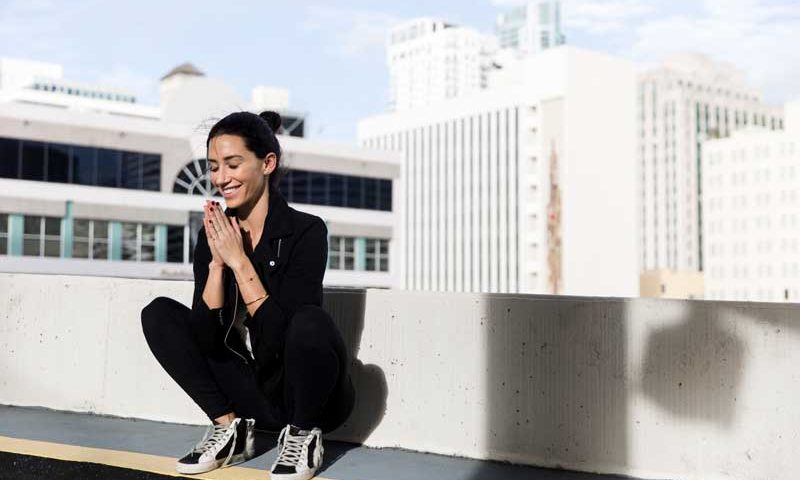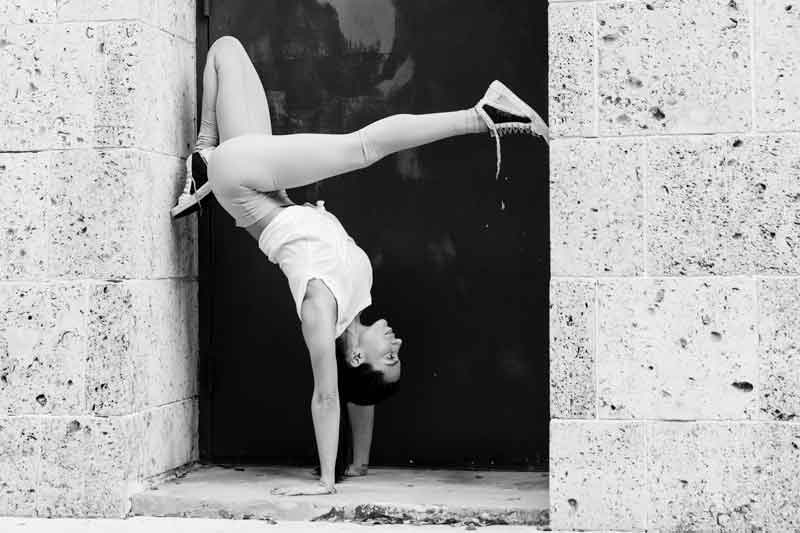
The must have yoga equipment
24th March 2017
Yoga Retreats Worldwide – Our Top 6 List
12th April 2017How yoga helps with your anxiety

If you suffer from anxiety, then you might have been recommended by your doctor to take up yoga. Doctors are increasingly suggesting yoga as a complimentary therapy or an alternative to medication because it encourages breathing, meditation and finding inner peace, all of which can reduce anxiety.
Yoga has been used as a practice to promote calm for thousands of years, but it is only more recently that the medical profession are coming round to the idea of using it as treatment for anxiety. This is because until recently there wasn’t much research into the benefits of yoga for anxiety, and therefore doctors preferred to stick to their tried and tested medication. However there is now research that shows yoga can be particularly beneficial for those with anxiety.
The science in the hundreds of studies that have been conducted look at the benefits of meditation for calming the mind. In 2015 in the Journal JAMA Internal Medicine a paper was published that looked at 47 studies of meditation and found consistent evidence that mindfulness meditation reduced symptoms of anxiety. This is because meditation encourages skills such as staying in the moment, and embracing worrying thoughts immediately so that you avoid worrying about things unnecessarily or building things up too much in your head.
When it comes to yoga, most experts agree that the combination of breathing and mindfulness that yoga encourages will help reduce anxiety. This has been found to be beneficial to people with depression, anxiety and veterans suffering from PTSD to name just some of the groups that have been studied.
Whether you suffer from anxiety, depression or simply want to take some time to relax, yoga is a great way to restore balance, gives you some time to calm your mind and is definitely worth building into your weekly or even daily routine.
The best part is that you don’t need any special equipment, clothes or classes to take start practicing yoga, and there are some poses that you can try right now that will help provide you with a sense of calm.
We’ve put together 4 yoga poses that will help restore balance, and you can do daily to increase mindfulness, or practice in moments of anxiety to reduce stress and help restore your calmness.
-
- Child’s Pose
Child’s pose is a resting pose in yoga. It is often used to relax and regroup either at the end of class as part of a cool down, or as a resting position between more difficult poses in a class. It can also be a great way to ease anxiety symptoms as well as releasing tension in your back, neck and shoulders.
During the pose you should focus on your breathing, which will calm your nervous system and help ease any anxiety you may be feeling.
To execute the pose begin on your hands and knees. Lower your chest down towards your thighs and your forehead towards the floor. Then either let your arms fall down by your sides with your hands next to your feet, or lengthen your hands out in front and put them underneath your forehead. Breathe deeply and as you exhale sink the bum down towards your heels. Stay here for however long feels good to you and be conscious of your breathing simply taking the moment to relax. When you’re finished slowly use your hands to walk back to an upright position.
-
- Tree Pose
Tree pose is a great pose for easing anxiety, a pose of balance it helps to encourage concentration, focus and awareness and promotes placing attention on yourself rather than on your anxiety. The great thing about this pose is that it can be practiced nearly anywhere as it’s quite subtle, which means even if your anxiety trigger is crowds, or stress at work you can take a moment to do this pose and restore balance.
To do this pose simply stand tall with your feet hips width apart before shifting all your weight onto your right leg. Bend your left knee and put the sole of your left foot into your inner right thigh or just below your knee with toes pointing towards the floor. Do not place your foot on your knee, as this could potentially cause injury.
Centre your pelvis directly over your right foot and press your left foot into your right leg while resisting with your right leg at the same time. Finally bring your hands up to in front of your heart in prayer position and hold for 2-3 breaths, or however long feels good for you, before switching legs and repeating on the other side.
-
- Warrior 3
Warrior 3 is a pose of strength and will challenge you, not only improving co-ordination, balance and posture, but also help anxiety as it improves digestion and gut health, which is known to have a direct link to anxiety. It is also another pose that forces you to focus on your physical self and redirects your thinking away from anxiety.
Start with your feet hips width apart and then turn to your left and make your stance wider so your feet are 3-4 foot apart. Turn your right foot 90 degrees so that your toes are pointing to the front of the mat and shift your left foot about 45 degrees so that it is angled towards the left side of your mat. Then align your pelvis with your right foot and bend your right knee.
Raise your arms up over your head and push your weight on your right foot to lift your left leg up as you lower forward until your body is parallel to the ground. Your arms will now be reaching forward and you will be pushing out through the heel of your left foot. Straighten up your right leg and hold for 2-3 breaths before lowering your leg back to the floor. You can then repeat on the other side.
-
- Legs up the wall
This pose relieves back pain as well as easing anxiety symptoms and can help improve circulation. This pose is best practiced somewhere quiet and calm where you have time for reflection. If you have any pain in your spine while doing this pose then use a pillow or blanket in under your back.

To start, sit next to a wall and lie onto your back, bringing your knees into your chest. Straighten your legs and place them onto the wall while shuffling your bum closer to the wall. Allow your heels to rest on the wall. Extend your arms over your head for an added stretch. If you don’t have a wall near your bed you can do this by simply lifting your legs up in the air at a ninety degree angle to your body and flex your toes to feel the stretch.
These 4 poses are useful for anyone to try if you’re feeling anxious, and are simple enough to be added into any daily routine. The most important thing is that you use these to take some time to breathe, reflect and relax. Doing yoga, breathing or meditation for 20 minutes a day can significantly reduce feelings of anxiety, so if you regularly feel stressed or anxious then now is the time to start taking some time for yourself to ensure your future health and happiness.

